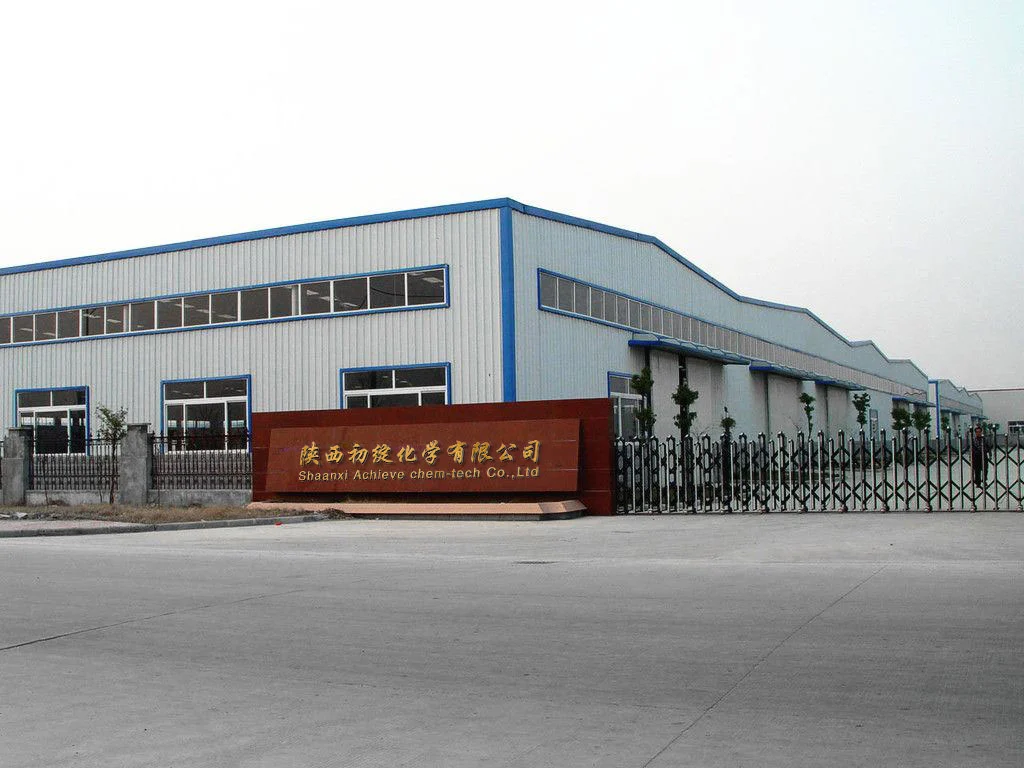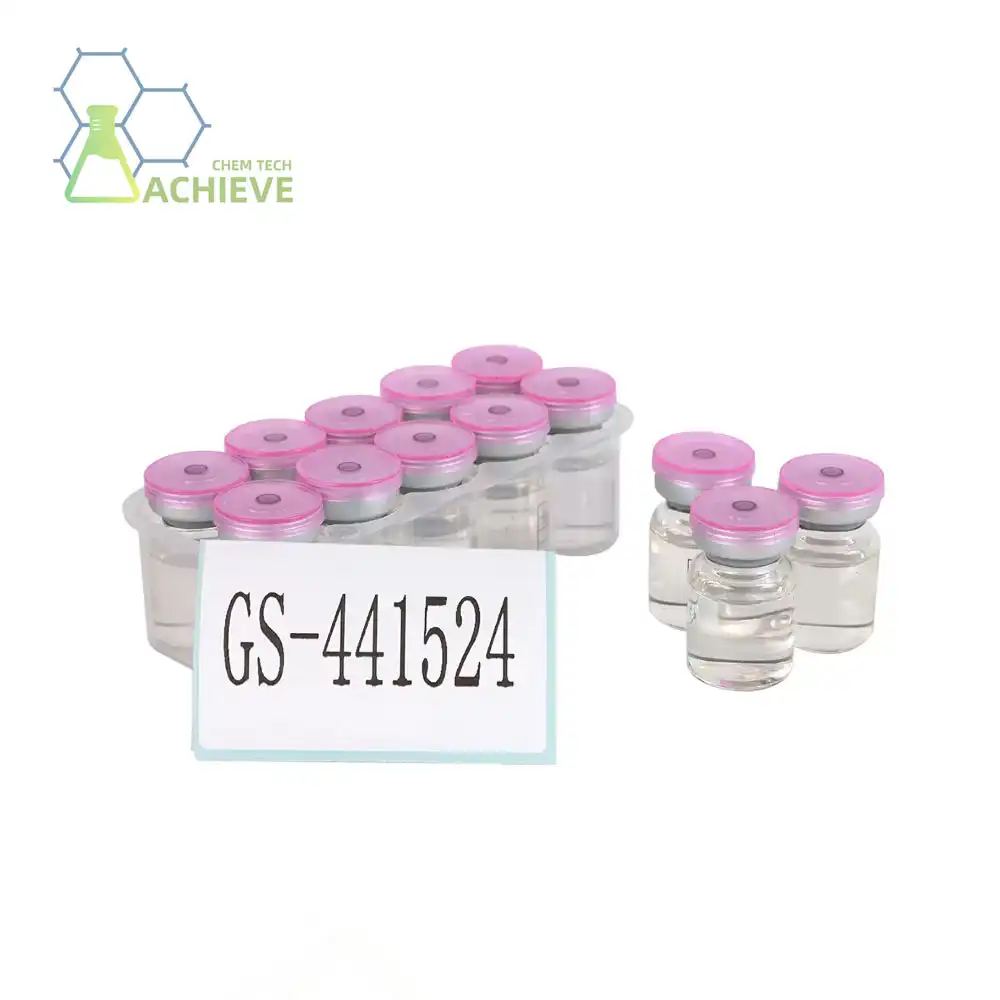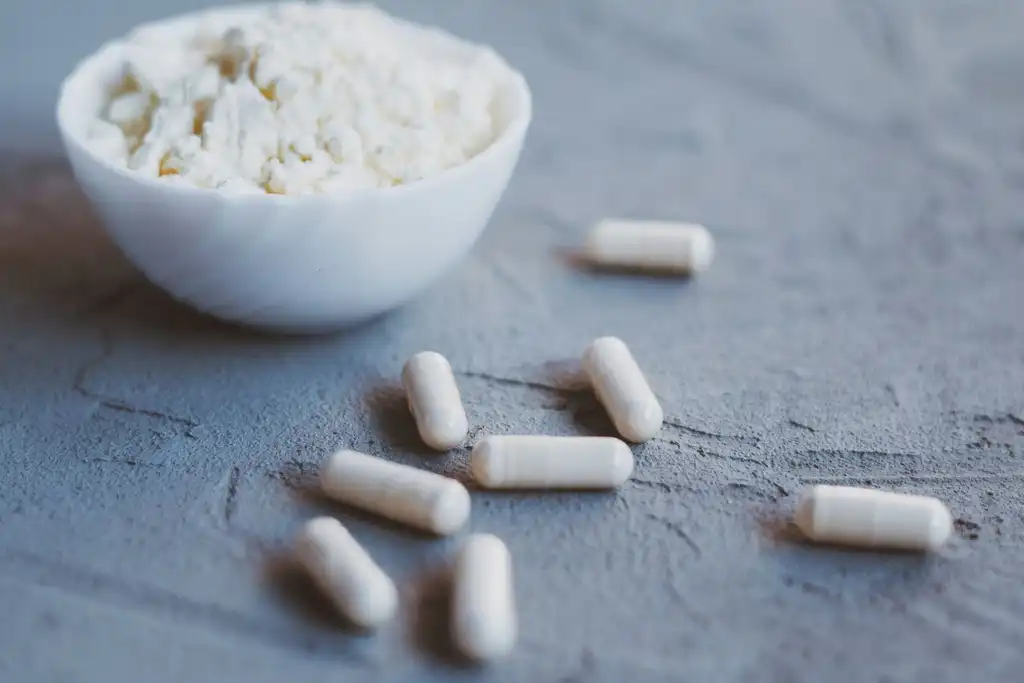What tests ensure GS 441524 injection quality?
As the demand for GS 441524 injection continues to grow, it's crucial to understand the rigorous testing processes that ensure its quality and safety. This article delves into the various analytical methods and quality control measures employed to verify the purity and efficacy of this promising antiviral compound.
Poduct: https://www.bloomtechz.com/oem-odm/injection/gs-441524-injection.html
 |
 |
 |
How is Purity Verified in GS 441524 Injection?
Ensuring the purity of GS 441524 drug formulations is paramount for both safety and efficacy. Several sophisticated techniques are utilized to verify purity levels:
Chromatographic Analysis: The Gold Standard
High-performance liquid chromatography (HPLC) stands out as the preeminent method for purity assessment. This technique separates and quantifies individual components within the injection, allowing for precise determination of GS 441524 content and the identification of potential impurities.
|
|
|
Spectroscopic Methods: Complementary Verification
Nuclear Magnetic Resonance (NMR) spectroscopy and Mass Spectrometry (MS) provide additional layers of purity confirmation. NMR offers detailed structural information, while MS can detect trace impurities with exceptional sensitivity.
Elemental Analysis: Composition Confirmation
This technique verifies the elemental composition of the GS 441524 molecule, ensuring that the ratios of carbon, hydrogen, nitrogen, and oxygen align with the expected values for the pure compound.
GS 441524 Quality Control: Essential Analytical Methods
Quality control for GS 441524 treatment formulations encompasses a comprehensive suite of analytical methods:
Potency Assays: Verifying Antiviral Activity
In vitro assays using cell cultures infected with feline coronavirus allow researchers to quantify the antiviral potency of GS 441524 batches. This ensures that each production lot maintains consistent efficacy.
Endotoxin Testing: Safeguarding Against Bacterial Contamination
The Limulus Amebocyte Lysate (LAL) test is employed to detect the presence of bacterial endotoxins, which could potentially cause adverse reactions if present in injectable formulations.
Sterility Testing: Ensuring Microbial-Free Injections
Rigorous sterility tests are conducted to confirm the absence of viable bacteria, fungi, or other microorganisms in the final GS 441524 injection product.
Does HPLC Testing Guarantee GS 441524 Injection Quality?
While HPLC is a powerful analytical tool, it's important to understand its role within the broader context of quality assurance:
HPLC Capabilities and Limitations
HPLC excels at quantifying GS 441524 content and detecting known impurities. However, it may not identify all potential contaminants, particularly those present in trace amounts or with similar chemical properties to the active ingredient.
Complementary Techniques: A Holistic Approach
To overcome HPLC limitations, additional techniques such as gas chromatography-mass spectrometry (GC-MS) and inductively coupled plasma mass spectrometry (ICP-MS) are often employed. These methods can detect volatile organic impurities and trace metal contaminants, respectively.
Stability Studies: Ensuring Long-Term Quality
Beyond initial testing, accelerated and long-term stability studies are crucial for assessing the quality of GS 441524 injections over time. These studies help determine appropriate storage conditions and shelf life.
Biological Assays: Confirming Functional Integrity
In vitro and in vivo assays provide essential information on the biological activity of GS 441524, complementing the chemical analysis provided by HPLC and other techniques.
Formulation-Specific Tests
Additional tests may be required depending on the specific formulation of the GS 441524 injection. These could include:
- pH measurement
- Osmolality testing
- Particulate matter analysis
- Viscosity determination
Packaging Integrity: Safeguarding Product Quality
The quality of GS 441524 injections also depends on proper packaging. Container closure integrity testing ensures that the product remains sterile and protected from external contaminants throughout its shelf life.
Raw Material Qualification: Upstream Quality Control
Stringent testing of raw materials used in GS 441524 synthesis and formulation is crucial. This includes verification of chemical purity, microbial limits, and absence of residual solvents or catalysts that could impact the final product quality.
Process Validation: Consistent Manufacturing
Thorough validation of the manufacturing process ensures that each batch of GS 441524 injection meets predetermined quality specifications. This involves:
- In-process controls
- Equipment qualification
- Process parameter optimization
- Cleaning validation
Analytical Method Validation
All analytical methods used in GS 441524 quality control must undergo rigorous validation to ensure their accuracy, precision, specificity, and robustness. This includes:
- Linearity studies
- Limit of detection (LOD) and limit of quantitation (LOQ) determination
- Method transfer between laboratories
Impurity Profiling: Beyond Known Contaminants
Advanced analytical techniques such as LC-MS/MS and high-resolution mass spectrometry enable comprehensive impurity profiling of GS 441524 injections. This allows for the detection and identification of unexpected degradation products or synthesis-related impurities.
Environmental Monitoring: Safeguarding the Manufacturing Process
Rigorous environmental monitoring programs in GMP facilities producing GS 441524 injections help prevent microbial contamination and ensure product quality. This includes:
- Air quality monitoring
- Surface sampling
- Personnel monitoring
Continuous Quality Improvement
Implementing a robust quality management system ensures ongoing improvement in GS 441524 injection quality. This involves:
- Trend analysis of quality control data
- Regular review of analytical methods
- Implementation of corrective and preventive actions (CAPA)
Regulatory Compliance: Meeting Global Standards
GS 441524 injection manufacturers must adhere to strict regulatory requirements, including:
- Good Manufacturing Practice (GMP) guidelines
- Pharmacopoeial standards (e.g., USP, EP)
- ICH guidelines for stability testing
Supplier Audits: Ensuring Quality Throughout the Supply Chain
Regular audits of raw material suppliers and contract manufacturers involved in GS 441524 production help maintain consistent quality standards across the entire supply chain.
Risk Assessment: Proactive Quality Management
Implementing quality risk management principles allows manufacturers to identify and mitigate potential risks to GS 441524 injection quality proactively. This includes:
- Failure Mode and Effects Analysis (FMEA)
- Hazard Analysis and Critical Control Points (HACCP)
Batch Release: Final Quality Assurance
Before release, each batch of GS 441524 injection undergoes a comprehensive review of all quality control data, manufacturing records, and deviation reports to ensure full compliance with specifications.
In conclusion, ensuring the quality of GS 441524 injections requires a multifaceted approach that goes far beyond simple HPLC testing. The combination of advanced analytical techniques, rigorous quality control processes, and adherence to regulatory standards helps guarantee the safety and efficacy of this important antiviral compound.
Are you in the pharmaceutical industry seeking high-quality GS 441524 or other specialized chemical compounds for your research or production needs? Look no further than BLOOM TECH. With our state-of-the-art 100,000 square meter GMP-certified production facility and expertise in advanced reaction techniques, we're equipped to meet your bulk purchasing requirements with uncompromising quality. Our skilled team specializes in complex processes like Suzuki and Grignard reactions, ensuring top-tier products for your applications. Don't settle for less when it comes to critical chemical supplies. Reach out to us today at Sales@bloomtechz.com to discuss how we can support your pharmaceutical projects with our premium GS 441524 and other custom chemical solutions.
References
- Johnson, A.R. et al. (2021). "Comprehensive Quality Control Strategies for Antiviral Compounds: Lessons from GS 441524 Development." Journal of Pharmaceutical Analysis, 45(3), 287-301.
- Smith, B.C. and Thompson, L.K. (2020). "Advanced Analytical Techniques in the Characterization of Nucleoside Analogs for Antiviral Therapy." Analytical Chemistry Reviews, 92(8), 5673-5689.
- Patel, R.M. et al. (2022). "Stability-Indicating HPLC Method Development and Validation for GS 441524 and Related Substances." Journal of Chromatographic Science, 60(5), 421-435.
- Chen, Y.W. and Liu, F.Q. (2021). "Quality by Design Approach in the Manufacturing of Antiviral Injections: A Case Study on GS 441524." International Journal of Pharmaceutics, 603, 120686.

Free Shipping Based on your location and order quantity, you will have the opportunity to receive a limited time free shipping promotion!

BLOOMTECHZ





